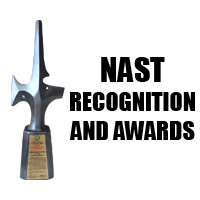Ebola virus and other infectious diseases were the focus of the Roundtable Discussion (RTD) on Coping with Emerging Infectious Diseases held on November 3, 2014 at Traders Hotel Manila. The RTD was organized by the National Academy of Science and Technology, Philippines (NAST PHL) through its Biological Sciences Division.
The recent outbreak in Western Africa and cases in the United States have given Ebola worldwide attention. Ebola is a virus from the family Filoviridae that causes African Hemorrhagic Fever which can be fatal if untreated.
Acd. William G. Padolina, president of NAST PHL, stressed the need for caution and preparedness for the eventuality that Ebola and other serious infectious diseases would reach the Philippine shores. One reason that makes our country vulnerable is the large number and mobility of Filipino overseas workers.
National Scientist Angel C. Alcala, chair of the Biological Sciences Division and focal person of the RTD, spoke of the controversies on the detection and control of Ebola in people returning from countries of West Africa. In support to Acd. Padolina’s statement, he also emphasized the need to learn more of its control before it possibly hits our country.
Acd. Veronica F. Chan, member of the Biological Sciences Division, explained the epidemiology of the Ebola virus including its evolution, incidence, distribution, and control. According to Acd. Chan, “Ebola” came from the name of a river in Sudan where it was discovered. However, even before it was named, there was already an epidemic that occurred in Marburg, Yugoslavia. The African Green Monkeys, which were exported to Germany for studies in vaccine production, brought the virus endemic to Africa. From this came about the other name, Marburg Ebola disease, for the African Hemorrhagic Fever caused by the virus. The first simultaneous outbreaks of Marburg-Ebola disease in Zaire listed 88% fatality rate and 55% in Sudan.
Dr, Noel Lee J. Miranda, an independent public health consultant, talked about his experience and gave some background on his work with the identification of the Ebola Reston strain virus in the country. According to Dr. Miranda, aside from the capacity to cause fatal hemorrhagic fever, Ebola virus can also mutate. It is the primary reason why animal reservoirs of the virus like fruit bats can transmit it to humans and other animals such as monkeys and even pigs.
Acd. Jaime C. Montoya, Chair of the Health Sciences Division, discussed matters that people need to know about emerging infectious diseases such as ecology, virulence or ability to cause disease, route of infection, and treatment, among others. Acd. Montoya stressed that Ebola enters the host through direct contact with infected secretions unlike the Severe Acute Respiratory Syndrome (SARS) that can be acquired through respiratory tract infection. Aside from high fatality rates, other causes of fear of Ebola include the bleeding, the absence of vaccine or cure for Ebola, and the fear of the unknown.
Dr. Mediadora C. Saniel, member of the governing council of the Philippine Council for Health Research and Development (PCHRD) and of the Presidential Coordinating Council on Research and Development (PCCRD), gave preventive and control measures on emerging infections. According to Dr. Saniel, prevention of infectious diseases, as well as early recognition and control are better because the cost of controlling outbreaks escalates tremendously when a pandemic detection is late. Drivers of emergence and spread were identified by Dr. Saniel as interaction among human and animal hosts, microorganisms, and the environment.
The World Health Organization (WHO) has an Ebola Response Roadmap to stop the transmission of the virus in affected countries. Aside from the international efforts, Dr. Saniel mentioned some actions made by our government including the Department of Health (DOH) Memoranda No. 2014-0257 and 2014-0291. These are “Interim Guidelines on Prevention and Control of Ebola Virus Disease” and “Interim Guidelines for Ensuring the Health Security of Overseas Filipino Workers in West African Countries and of Filipino UN Peacekeepers in Liberia against Ebola Virus Disease” respectively.
Dr. Leslie Michelle M. Dalmacio, Vice Chair on Academics of the Department of Biochemistry and Molecular Biology, College of Medicine, University of the Philippines Manila provided the synthesis of the round table discussion. # (Aislynn Fabiola G. Manuel)












